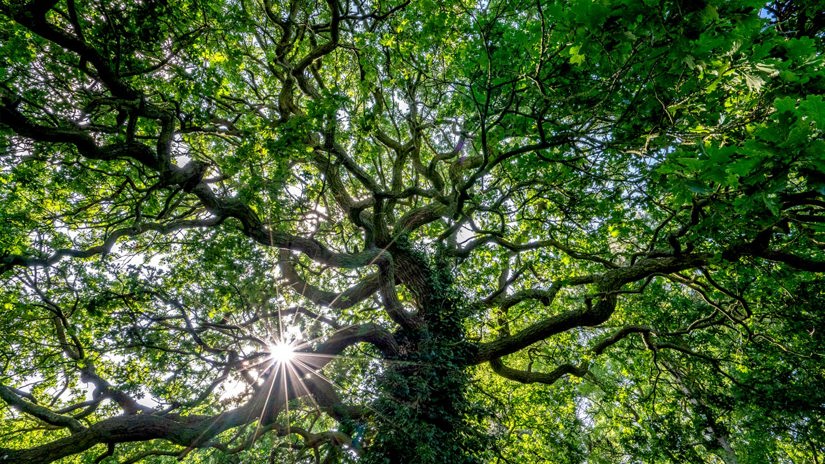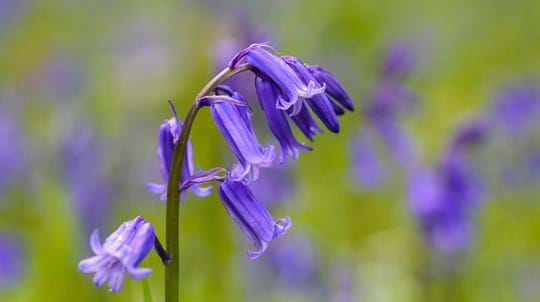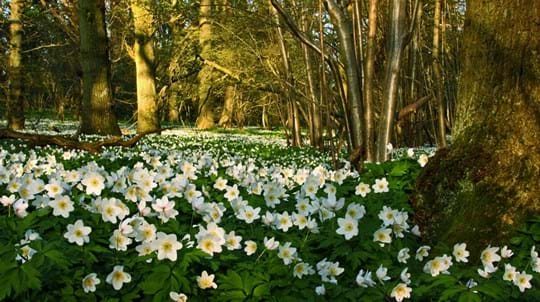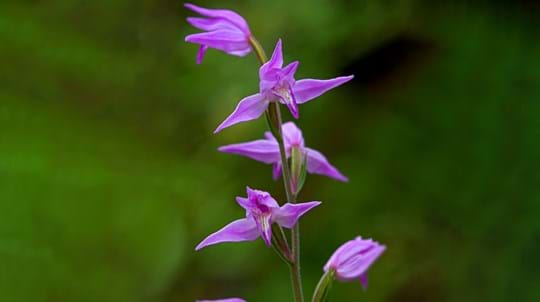
Find a wood near you
Search thousands of woods across the UK and gather information on the local facilities, features, wildlife and history in the area.
Find a wood
Content manager
Did you know that the UK is home to a native, wild species of daffodil? Forget the gaudy imposters lining roadsides and parks this spring - head to the woods for an encounter with the real thing.
The wild daffodil is also know as the 'Lent lily' or 'Easter lily', and in Welsh as 'Peter's leek'.
The UK's wild daffodil (Narcissus pseudonarcissus) might be less showy than the bold, bright varieties planted in gardens and villages across the land, but it is still unmistakable. Look for the familiar trumpet-shaped tube at the centre in a warm, egg-yolk yellow, surrounded by pale yellow petals. The leaves are long, thin and flat with a grey-green colour.
Wild daffodils are shorter than their ornamental counterparts and also more difficult to find, but where they do grow they often form carpets across the woodland floor. Look for them flowering in March and April.
Wild daffodils are fond of damp woodland and meadows, especially ancient woodland. Once widespread, they are now restricted to scattered colonies in parts of England and Wales. Cumbria, Devon, the Black Mountains in Wales and the counties along the Welsh border are all hotspots. Gloucestershire's 'Golden Triangle' - the area between Newent to the south and the villages of Dymock and Kempley to the north - is also particularly famous for its thick concentration each spring.
Check out our top tips to help you enjoy your visit while protecting precious wildlife.
A stunning ancient wood tucked away in the northern part of Dartmoor, complete with stunning views, a tumbling river and a wealth of woodland archeology to explore.
The restoration work we're doing is allowing more sunlight to reach the woodland floor, encouraging wild flowers to spread along verges and glades. As well as wild daffodils you can also expect to spot wood sorrel, primrose, dog’s mercury, red campion, bluebells, wood anemone, wild garlic and yellow archangel in spring.
This wood near Hexham is thought to be Northumberland's last woodland refuge for wild daffodils. It's also a good place to enjoy the heady garlic scent of carpets of ramsons which spread beneath huge beech trees.
As well as other wild flowers, visitors may be lucky enough spot red squirrels, roe deer, stoats and foxes as they go about their secret business among the trees.
An ancient woodland and Site of Special Scientific Interest which boasts locally rare plants and a number of old trees. The wood is also the site of a prehistoric Saxon burial, as well as plenty of other archaeological interest.
Everdon Stubbs is thought to be home to one of the largest populations of wild daffodil in the county. Look out too for bluebells and wood anemone as you explore.
Just five miles from Nottingham city centre, Oldmoor Wood offers an escape to rural tranquility. The wood you see today was planted in 1792 as part of a wider area of parkland, although the land once held remnants of ancient woodland and wood pasture which were incorporated into the design.
As well as daffodils, visit for displays of bluebells and snowdrops, plus wood anemone, yellow archangel, wood sorrel, giant bellflower, yellow pimpernel and wood sanicle.

Search thousands of woods across the UK and gather information on the local facilities, features, wildlife and history in the area.
Find a wood
Visiting woods
See a stunning sea of blue this spring. Discover our best woods for bluebells.

Blog
Charlie Mellor • 11 Feb 2021

Blog
Charlotte Varela • 13 May 2025

Blog
Laura Cottam • 26 Apr 2019

Blog
Laura Cottam • 29 May 2019